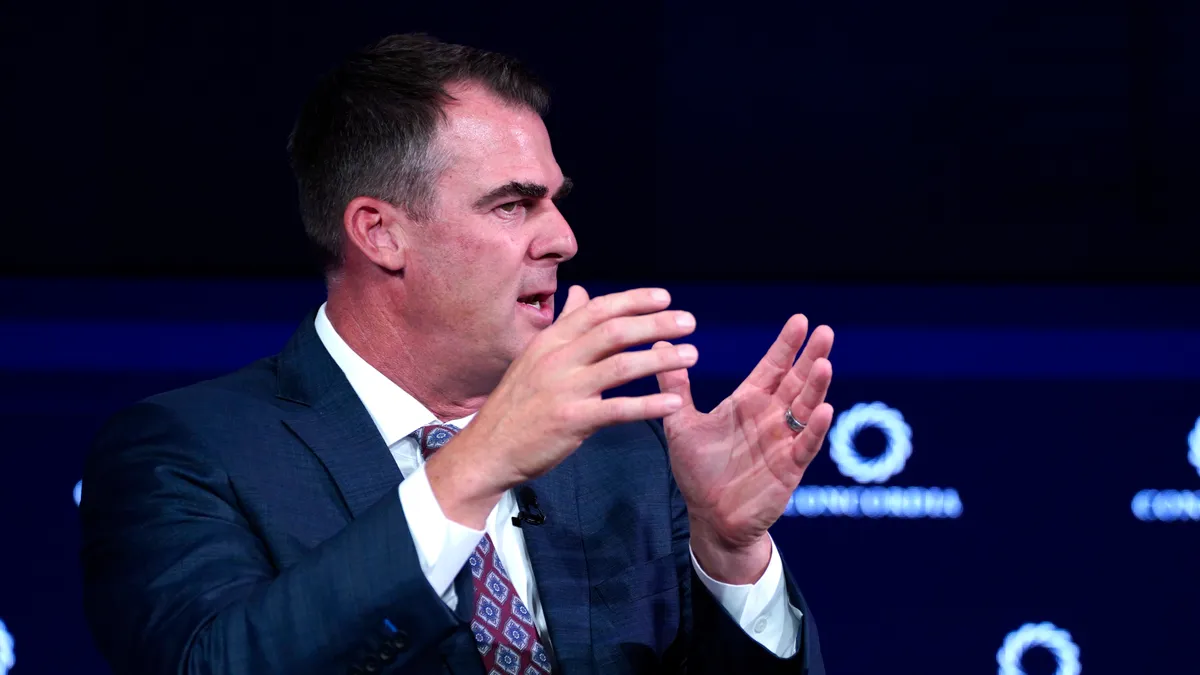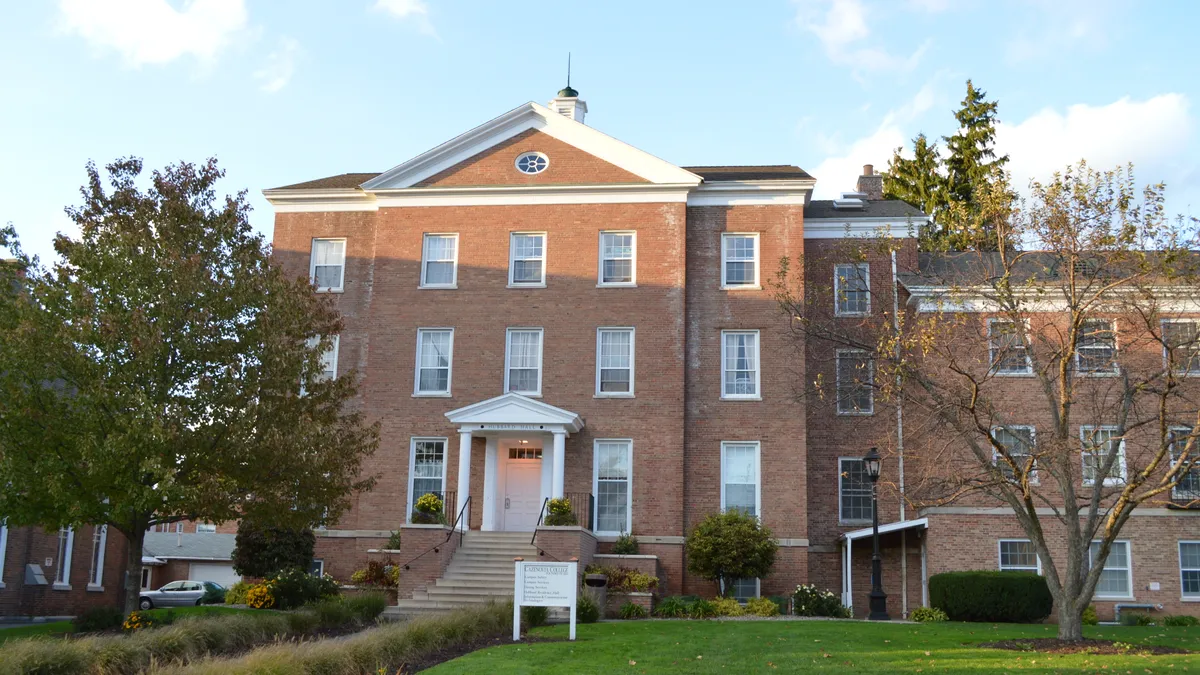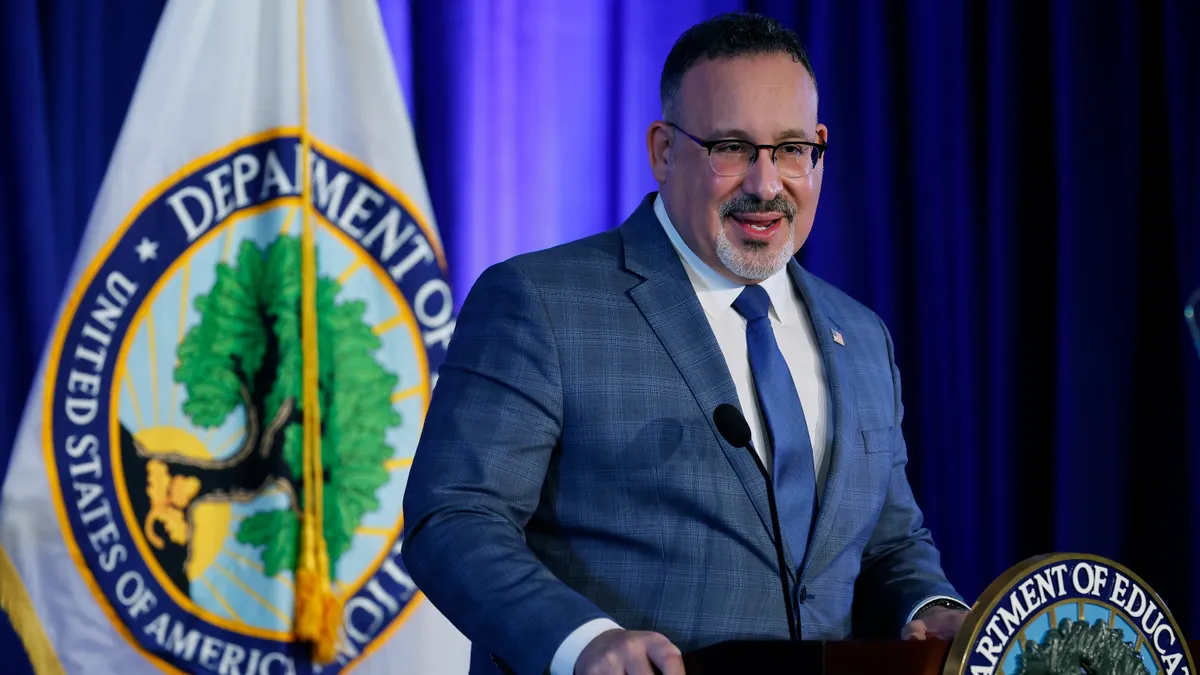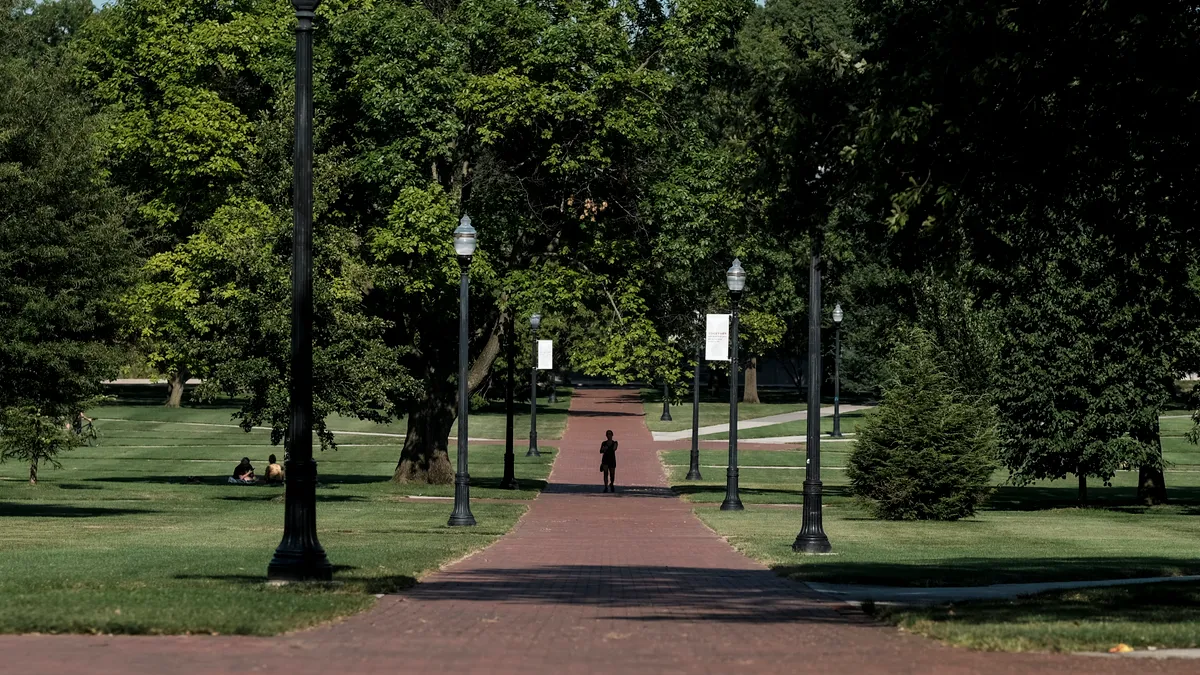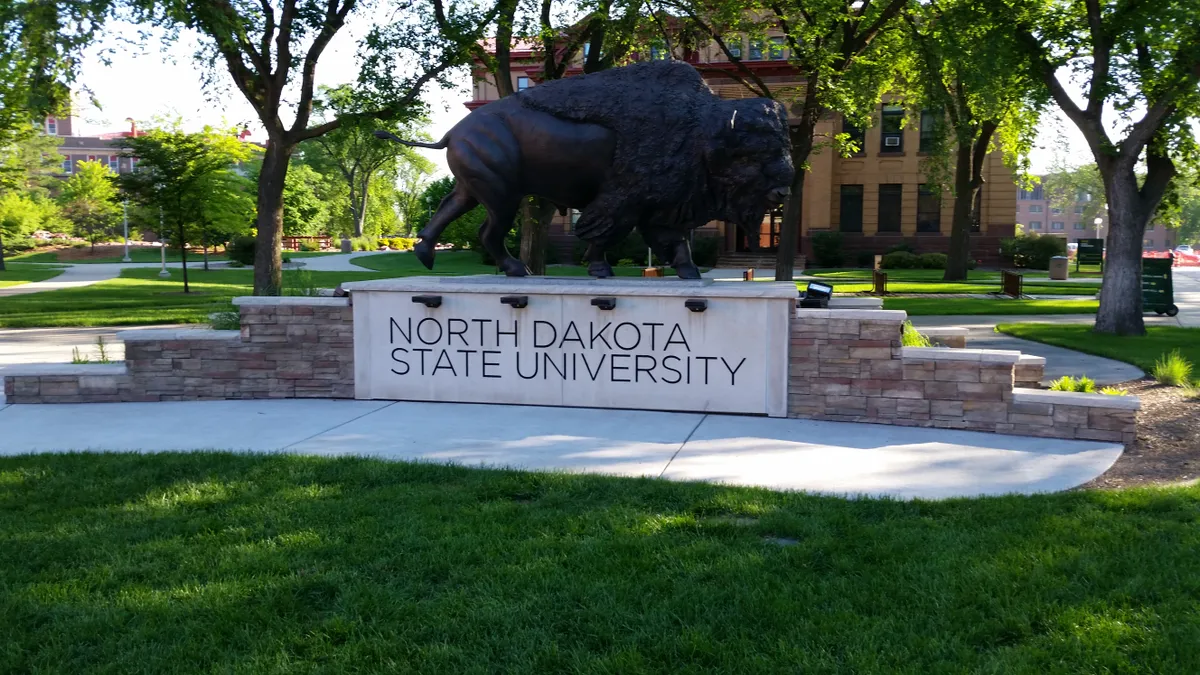Ricardo Azziz has held numerous executive positions in higher education and led the merger that resulted in Georgia Regents University, now Augusta University. He is principal at Strategic Partnerships in Higher Education, or SPH, Consulting Group.
He writes the regular Merger Watch opinion series on corporate restructuring in higher education.
Facing increasingly dire enrollment trends and forecasts, several state governors have recently announced the intention to consolidate their public higher education institutions or are weighing whether they should. That includes Oklahoma Gov. Kevin Stitt, Pennsylvania Gov. Josh Shapiro and South Carolina Gov. Henry McMaster.
Opponents have been quick to react, with the governing board of Eastern Oklahoma State College rebuffing a merger proposal from the state’s governor. The consolidation proposal in Pennsylvania seemed to fare better, with current higher ed institution leaders publicly expressing support.
These announcements follow similar efforts in other states, including Kansas, Vermont, Georgia and Connecticut. Considering the increasing challenges to higher education, we should expect that merger initiatives from state leaders will grow in the coming years.
State governments — and ergo, state taxpayers — are important funders of higher education, an expenditure that directly competes with other interests. An analysis by the Urban Institute noted state and local governments spent $321 billion on higher education in 2020, about 9% of their total direct general spending. That represents the fourth largest bucket of funding, which is about equal to spending on health and hospitals.

Pressure will grow to reduce investment in higher education as the demand continues or increases from other sectors, including healthcare for an aging population and maintenance and upgrades for maturing infrastructure.
Changes in state demographics also play a significant role in the drive to consolidate public colleges and universities. Most higher education systems were built and have continued to expand with the expectation that the traditional population of college students would continue to grow. But those predictions are now facing a harsh reality check.
U.S. Census Bureau data shows that most state populations stayed flat or increased modestly in 2023.
However, these figures mask the significant decrease in some states' pool of traditional-aged students, typically considered between 18 to 25 years old. Between the 2012-13 and 2026-27 academic years, 17 states are predicted to see their number of high school graduates decline, according to estimates from the National Center for Education Statistics.
Unfortunately, state officials often pair their intention to consolidate higher education with a less laudable trend — the increasing partisan interventions in higher education offerings. These include attacks on diversity, equity and inclusion efforts, sociology, liberal arts, the selection of chief executives and the value of higher education as a whole.
These unfortunate efforts decrease the legitimacy of genuine attempts to control college costs, increase access and improve the quality of public higher education in a state, including through efforts to merge institutions.
Having led various consolidation efforts in the public sector, including in hospitals and higher education, I continue to have conversations with state and system leaders. These discussions reveal several important factors that help determine the success or failure of statewide consolidation efforts.
The vision offered for the consolidation efforts:
Vision statements should be as genuinely inclusive and as student-focused as possible. Statements primarily speaking to cost-savings or to “right-sizing” the enterprise will simply help create divisions between those supporting the value of higher education and those that are perceived not to.
Additionally, does the vision statement speak to what will be gained by the higher education community? Will there be new investments, even if they are short term? Will there be efforts to improve support for students and their families? What is to be gained by the state higher education community in exchange for support of the merger proposals?
The existing relationship between the governor’s office and the state’s higher education sector:
This relationship is a critical factor in whether consolidation proposals are accepted. Is it adversarial? Or mutually respectful?
A relationship founded on prior attacks — including on higher education’s independence, value and perceived political leanings — will do little to help the state’s campus community support consolidation. Governors should remember they cannot directly obtain requisite approval from accreditors and other key agencies for college and university mergers. These efforts must be initiated by the institutions themselves.
The degree of control and influence by the governor’s office:
While undoubtedly influence is much more important than authority, the degree of actual control matters as well.
For example, how much funding does the state actually provide institutions? What is the degree of local control (and funding) of state colleges and universities? And who actually appoints the campuses’ governing boards and chief executives?
Governing boards, especially for community and technical colleges, are often appointed by the county or locality. What is the role and extent of authority of other elected representatives over the state’s higher education sector? What is the extent of involvement, and political power, of organized labor and unions on campus? These and many more questions will significantly impact a governor’s ability to significantly restructure the state’s higher education institutions.
The structure of the state higher education system:
Is there one central governing body or does each campus have its own separate governing board? Are the boards appointed centrally, such as by the governor’s office, or locally?
Public higher education systems that have central governing bodies can more readily merge their institutions compared to those whose governing authority is dispersed and/or locally controlled.
The qualities of the designated leader:
As several co-authors and I recently discussed in a report for the TIAA Institute, the qualities and skills of the leaders appointed to oversee and drive the consolidation efforts are critical. Leaders should be politically savvy, organizationally experienced, student-focused, clear-minded and extremely thick-skinned.
To the extent possible, they should be individuals whose reputations and livelihoods do not fully — or at all — depend on the success of the transformation effort. In effect, these individuals should be both courageous and true servant-leaders, those who are first and foremost dedicated to the betterment of their institutions and communities.
The extent of public discussion:
While we all, particularly us faculty, believe that everybody should have a say in decisions that impact our higher education institutions, we should recognize that the authority for a college or university structure ultimately rests on the shoulders of its immediate governing board.
An analysis of mergers in the sector that I and other higher education experts conducted suggests that limiting the extent of public debate favors the eventual success of the effort. Alternatively, using the suggestion of consolidation efforts as a tool for extended public debate about the value of higher education or political positioning around re-election campaigns guarantees the development of strong opposition — and the eventual failure of the effort.
The speed of decision-making:
In conjunction with limiting the extent of public debate, the speed of decision-making will critically impact the ability of any authority, including state leaders and governing boards, to execute institutional mergers in their higher education systems. Prolonged decision-making, which is often tied to extended public debate, favors the opposition and often precedes the failure of these efforts.
Many college leaders are wary of state governments intervening in the structure and delivery of higher education. However, governors play important, albeit not necessarily dominant, roles in their states’ public higher education.
While the factors above will impact the success of such efforts, the ability of governors to successfully mandate higher education mergers depends on their political influence and power. We should also remember the flip side — mergers of public higher education institutions rarely can occur without the full and explicit support of the state governor’s office.


